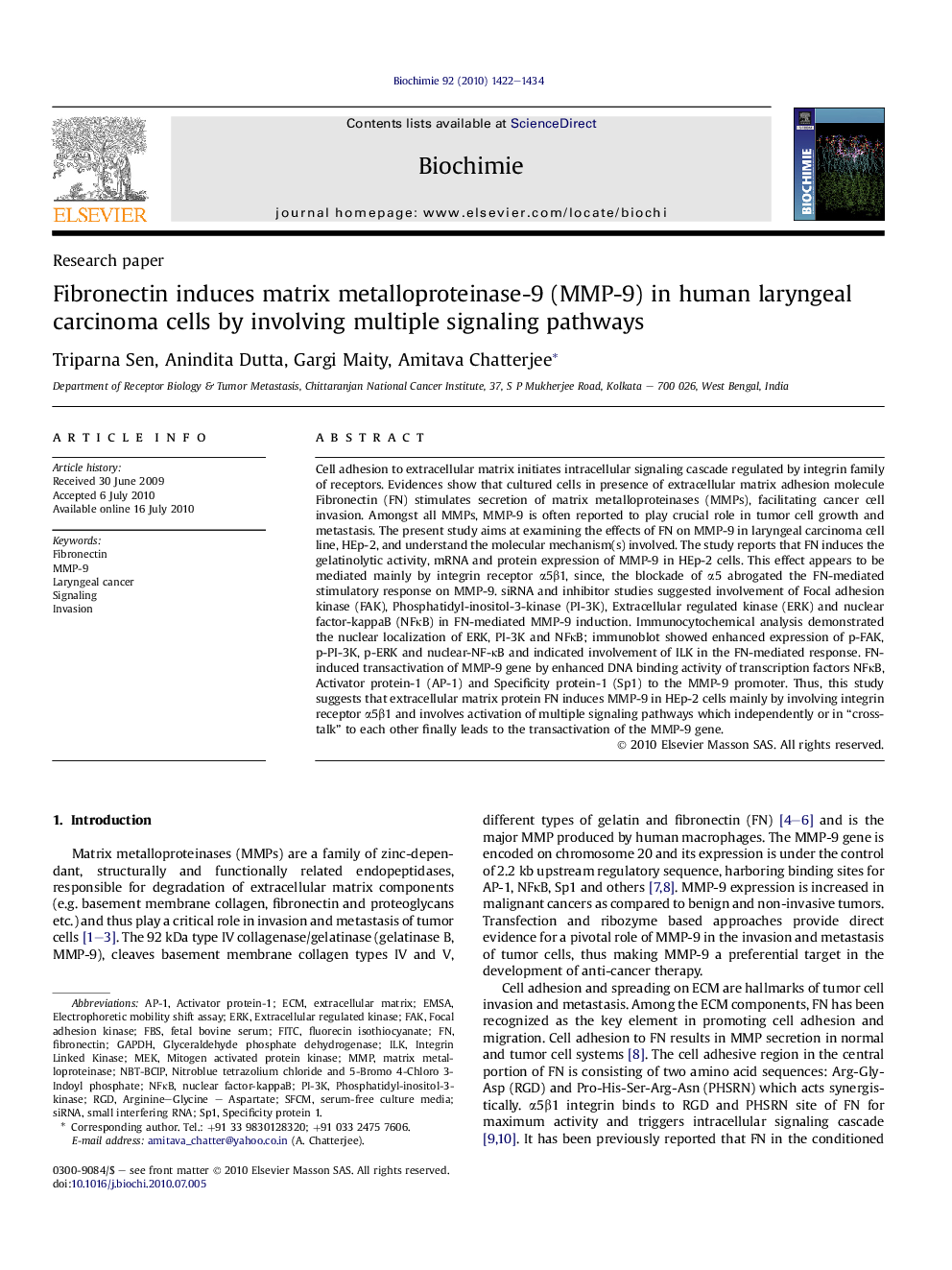| Article ID | Journal | Published Year | Pages | File Type |
|---|---|---|---|---|
| 1952580 | Biochimie | 2010 | 13 Pages |
Cell adhesion to extracellular matrix initiates intracellular signaling cascade regulated by integrin family of receptors. Evidences show that cultured cells in presence of extracellular matrix adhesion molecule Fibronectin (FN) stimulates secretion of matrix metalloproteinases (MMPs), facilitating cancer cell invasion. Amongst all MMPs, MMP-9 is often reported to play crucial role in tumor cell growth and metastasis. The present study aims at examining the effects of FN on MMP-9 in laryngeal carcinoma cell line, HEp-2, and understand the molecular mechanism(s) involved. The study reports that FN induces the gelatinolytic activity, mRNA and protein expression of MMP-9 in HEp-2 cells. This effect appears to be mediated mainly by integrin receptor α5β1, since, the blockade of α5 abrogated the FN-mediated stimulatory response on MMP-9. siRNA and inhibitor studies suggested involvement of Focal adhesion kinase (FAK), Phosphatidyl-inositol-3-kinase (PI-3K), Extracellular regulated kinase (ERK) and nuclear factor-kappaB (NFκB) in FN-mediated MMP-9 induction. Immunocytochemical analysis demonstrated the nuclear localization of ERK, PI-3K and NFκB; immunoblot showed enhanced expression of p-FAK, p-PI-3K, p-ERK and nuclear-NF-κB and indicated involvement of ILK in the FN-mediated response. FN-induced transactivation of MMP-9 gene by enhanced DNA binding activity of transcription factors NFκB, Activator protein-1 (AP-1) and Specificity protein-1 (Sp1) to the MMP-9 promoter. Thus, this study suggests that extracellular matrix protein FN induces MMP-9 in HEp-2 cells mainly by involving integrin receptor α5β1 and involves activation of multiple signaling pathways which independently or in “cross-talk” to each other finally leads to the transactivation of the MMP-9 gene.
